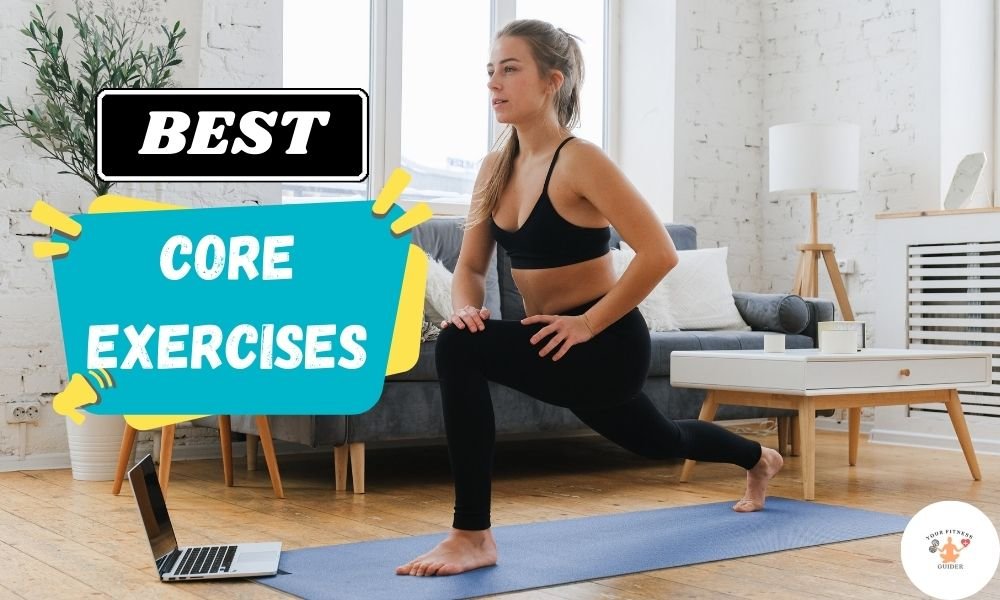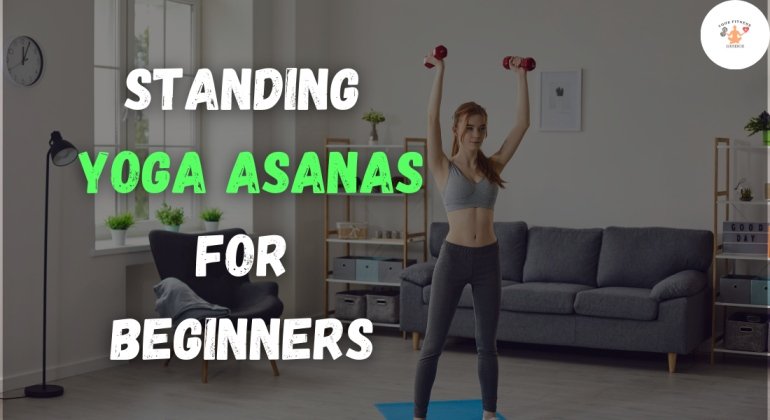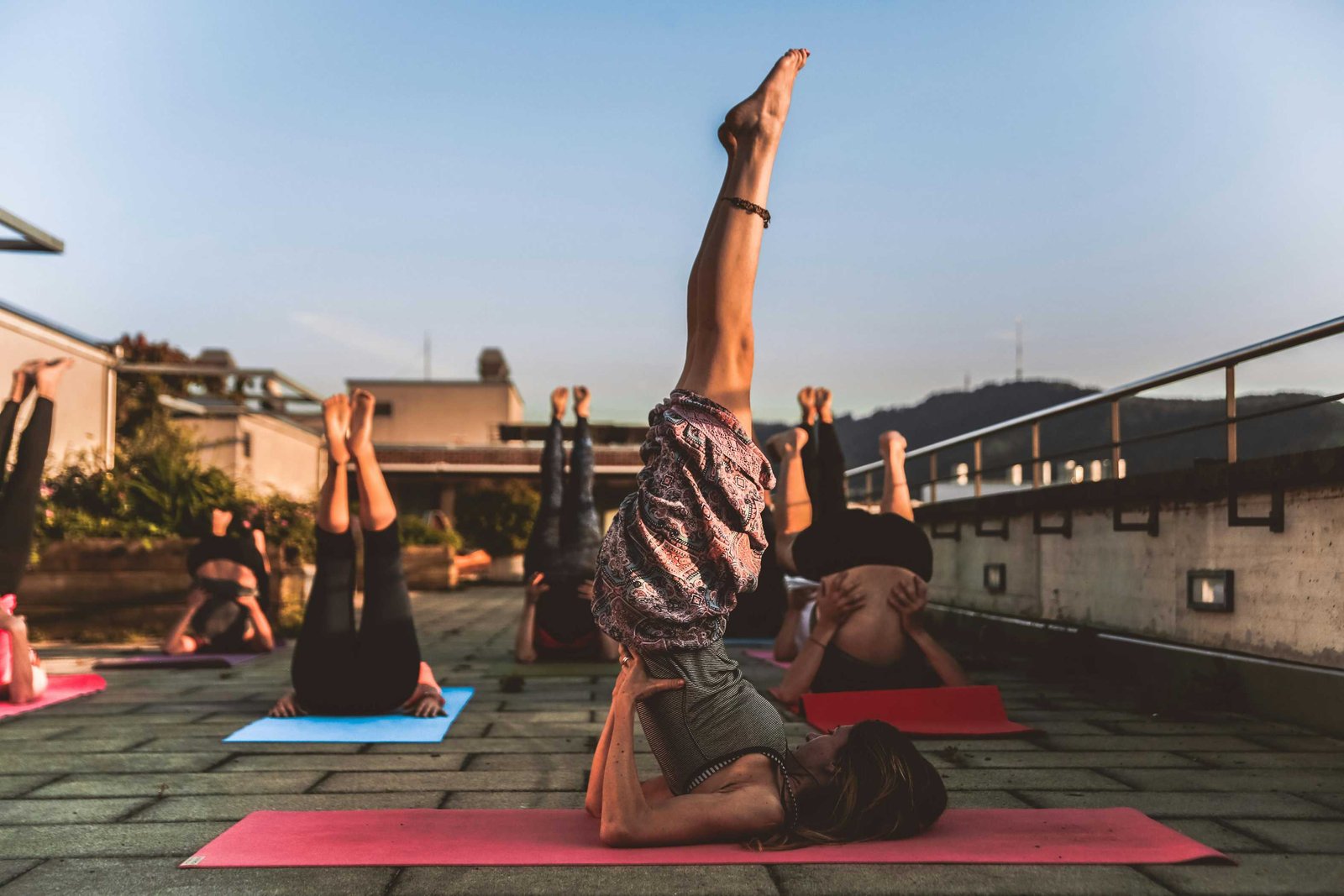
Constipation is a frequent digestive issue that can cause discomfort and negatively impact your general well-being. While there are many remedies available, yoga offers a natural and effective way to relieve constipation and promote healthy digestion. In this article, we will explore the benefits of yoga for constipation and provide you with a series of poses that can help alleviate this condition.
How Yoga Can Help
Yoga offers a gentle yet effective way to improve digestive health and relieve constipation. Here are some ways in which yoga can be useful:
1. Stimulating Digestion
Certain yoga poses, such as Pavanamuktasana (Wind-Relieving Pose) and Ardha Matsyendrasana (Half Lord of the Fishes Pose), can help stimulate the digestive system. These poses involve twisting and compressing the abdomen, which can help move stagnant waste through the intestines.
2. Relieving Stress
Stress is a common contributor to digestive issues, including constipation. Yoga practices, such as Pranayama (breathing exercises) and meditation, can help calm the mind and reduce stress levels, thereby improving digestion.
3. Improving Circulation
Yoga poses that involve forward bends, such as Uttanasana (Standing Forward Bend) and Paschimottanasana (Seated Forward Bend), can help improve blood circulation to the abdominal organs. This can enhance digestive function and relieve constipation.
4. Strengthening the Core
A strong core is essential for healthy digestion. Yoga poses that engage the core muscles, such as Navasana (Boat Pose) and Phalakasana (Plank Pose), can help strengthen the abdominal muscles and improve overall digestive health.
5. Enhancing Mind-Body Connection
Yoga is not just about physical poses; it also emphasizes the mind-body connection. By practicing yoga, individuals can become more aware of their bodies and their digestive processes, which can lead to healthier habits and better digestion.
Yoga Poses for Constipation
1. Wind-Relieving Pose (Pavanamuktasana)
How to do it:
- Lie flat on your back, knees straight, and arms by your sides.
- As you exhale, bend your knees and bring them up to your chest.
- Clasp your hands around your knees or shin. You can also hold your elbows if that’s more comfortable.
- Inhale deeply, and as you exhale, gently lift your head towards your knees. Try to touch your knees with your chin, but don’t force it.
- Hold this position for 25 to 30 seconds, breathing deeply and evenly.
- Release and lower your head and legs back to the floor as you exhale.
Benefits:
- Aids in digestion by massaging the intestines and releasing trapped gases.
- Helps to strengthen the abdominal muscles and improve metabolism.
Precautions:
- Avoid this pose if you have a hernia or recent abdominal surgery.
- If you have any neck or back injuries, perform this pose under the guidance of a qualified instructor and avoid lifting your head off the floor too much.
2. Seated Forward Bend (Paschimottanasana)

How to do it:
- Sit on the floor, with your legs straight in front of you.
- Inhale, then lift your arms above your head.
- Exhale and bend forward from the hips while maintaining your spine straight.
- Reach towards your feet with your hands. If you can’t reach your feet, you can hold your shins or ankles.
- Keep your elbows straight and avoid rounding your back.
- Maintain the posture for 20-30 seconds, inhaling deeply.
- To release, inhale and slowly come back up to the sitting position.
Benefits:
- Stretches the spine, shoulders, and hamstrings.
- Massaging the abdominal organs aids digestion and relieves constipation.
Precautions:
- If you have a herniated disc or a back problem, avoid this stance.
- If you have a hamstring injury, bend your knees slightly or perform the pose with the guidance of a yoga instructor.
3. Cat-Cow Pose (Marjaryasana-Bitilasana)
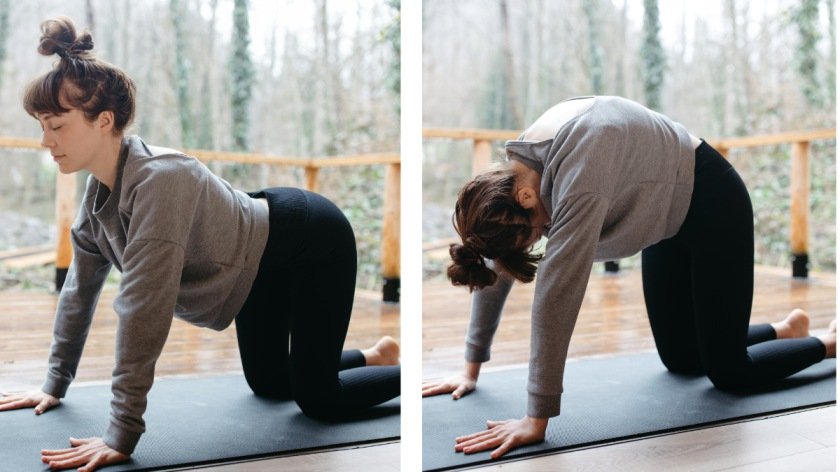
How to do it:
- Start on your hands and knees in a tabletop position, with your wrists directly under your shoulders and your knees directly under your hips.
- Inhale as you drop your belly towards the mat, lift your chest and chin towards the ceiling, and arch your back (Cow Pose).
- Exhale as you draw your belly button towards your spine, round your back towards the ceiling, and tuck your chin towards your chest (Cat Pose).
- Continue flowing between the cat and cow poses, synchronizing your breath with your movement. Inhale for Cow Pose and exhale for Cat Pose.
- Repeat for 5-10 rounds or as many as feels comfortable.
Benefits:
- Increases flexibility and mobility in the spine.
- Massages the digestive organs, helping to improve digestion and alleviate constipation.
Precautions:
- If you have a neck injury, keep your head in line with your torso and avoid excessive neck movement.
- If you have wrist issues, you can perform this pose on your fists or using yoga blocks under your hands for support.
4. Child’s Pose (Balasana)

How to do it:
- Kneel on the floor with your big toes touching and knees hip-width apart.
- Sit back on your heels and slowly fold forward, walking your hands out in front of you.
- Rest your forehead on the mat and bring your arms alongside your body, palms facing up.
- Relax your whole body, allowing your chest to rest on your thighs and your belly to rest between your thighs.
- Hold the pose for 30 seconds to a few minutes, breathing deeply and evenly.
- To release, walk your hands back towards your body and slowly sit back up.
Benefits:
- Stretching the spine provides relief for back and neck pain.
- Relaxes the mind, reducing stress and anxiety.
Precautions:
- If you have knee or ankle injuries, place a folded blanket under your knees for support.
- Pregnant women should separate the knees slightly to make room for the belly and avoid putting pressure on the abdomen.
5. Bridge Pose (Setu Bandhasana)
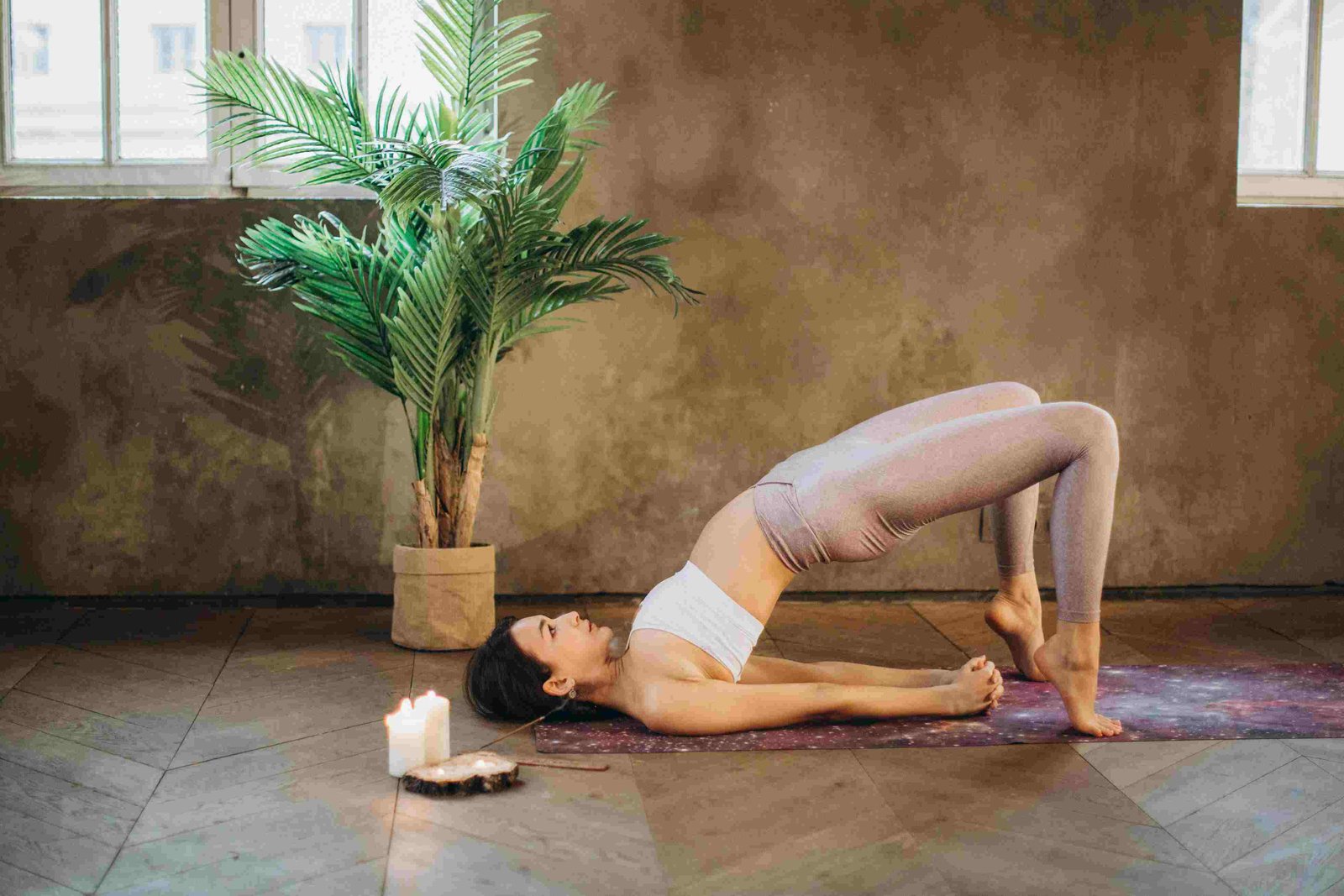
How to do it:
- Lay flat on your back with your feet hip-width apart and your knees bent.
- Place your arms next to your body, palms facing downward.
- Lift your hips toward the ceiling while pressing your feet and arms into the floor.
- Keep your knees directly over your heels and engage your glutes and thighs.
- You can interlace your fingers under your hips and extend your arms for a deeper stretch.
- Hold the pose for 25-30 seconds, breathing deeply.
- To release, gently lower your hips back down to the floor.
Benefits:
- Strengthens the back, glutes, and hamstrings.
- Stretches the chest, neck, and spine, improving flexibility.
Precautions:
- If you have a neck or back ailment, avoid performing this pose.
- If you have high or low blood pressure, consult with your doctor before practicing this pose, and avoid raising your hips too high.
6. Apanasana (Knees-to-Chest Pose)
How to do it:
- Lying flat on your back, extend your legs and keep your arms by your sides.
- As you exhale, bring both knees towards your chest.
- Clasp your hands around your knees or shins.
- Keep your back flat on the mat and relax your shoulders.
- Hold the pose for 20-30 seconds, breathing deeply and gently rocking side to side if desired.
- To release, exhale, and release your knees, extending your legs back to the floor.
Benefits:
- Helps to relieve lower back pain and discomfort.
- Aids digestion and helps reduce gas and bloating.
Precautions:
- If you have a herniated disc or spinal injury, use caution and avoid pulling your knees too close to your chest.
- Pregnant women should keep their knees slightly apart to avoid pressure on the abdomen.
Incorporating Yoga Into Your Routine
To experience the benefits of yoga for constipation, it’s essential to incorporate it into your daily routine. Start with a few simple poses and gradually increase the intensity and duration as you become more comfortable. At Your Fitness Guider, we recommend consulting with a qualified yoga instructor to develop a personalized yoga practice tailored to your needs.
Conclusion
Yoga offers a holistic approach to relieving constipation and improving digestive health. By incorporating yoga into your daily routine, you can stimulate digestion, relieve stress, improve circulation, strengthen your core, and enhance your mind-body connection. The yoga poses outlined in this article provide a gentle and effective way to alleviate constipation naturally. Remember to listen to your body and practice with awareness to reap the full benefits of yoga for constipation.
FAQ’s
How can yoga help with constipation?
Yoga can help stimulate digestion, relieve stress, improve circulation, strengthen the core, and enhance the mind-body connection, all of which contribute to alleviating constipation naturally.
How can one incorporate yoga into their daily routine to relieve constipation?
To experience the benefits of yoga for constipation, start with a few simple poses and gradually increase intensity and duration. Consulting with a qualified yoga instructor to develop a personalized practice is recommended.
Are there any precautions to take when practicing yoga for constipation?
Yes, if you have specific health conditions such as hernia, recent abdominal surgery, neck or back injuries, or high/low blood pressure, it’s important to consult with a healthcare professional or a qualified yoga instructor before practicing yoga for constipation.
What are the benefits of practicing yoga for constipation?
The benefits of practicing yoga for constipation include improved digestion, reduced stress levels, enhanced circulation, strengthened core muscles, and a better mind-body connection.


